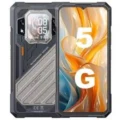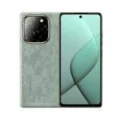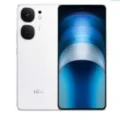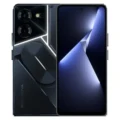Nokia 800 Tough






- : 512MB RAM Snapdragon 205
- : 2.4" 240x320 pixels
- : 2100mAh
- : 2MP
Introducing the Nokia 800 Tough – your rugged companion for extreme conditions. Built to endure the toughest environments, this resilient mobile phone is perfect for adventurers, outdoor enthusiasts, and professionals facing challenging situations.
Designed with durability in mind, the Nokia 800 Tough boasts an IP68 water and dust resistance rating, ensuring it can handle water immersion and resist dust and dirt. Its military-grade certification (MIL-STD-810G) emphasizes its toughness, making it an ideal choice for those who need a reliable device in demanding settings.
Featuring a 2.4-inch display and large tactile buttons, the Nokia 800 Tough provides easy navigation even in extreme conditions or while wearing gloves. The physical keypad enhances usability, allowing for quick and precise input, crucial in time-sensitive situations.
With a powerful battery, the Nokia 800 Tough ensures long-lasting performance, allowing users to stay connected in remote locations without the hassle of frequent recharging. The phone’s impressive durability extends to its drop protection, making it resilient against accidental falls and impacts.
Capture your adventures with the 2MP rear camera, perfect for quick snapshots in challenging environments. The Nokia 800 supports 4G LTE connectivity, ensuring fast and reliable communication wherever your journeys take you.
Stay connected and secure with the dedicated emergency button, providing a quick and direct link to help in critical situations. The phone’s flashlight function further enhances its utility as a reliable tool in low-light environments.
In summary, it is a no-nonsense, durable mobile phone tailored for those who demand reliability in challenging conditions. Whether you’re navigating the great outdoors or working in demanding professions, it is designed to withstand the elements and keep you connected when it matters most. Choose durability, choose it.
Specs
Network
| 2G Network GSM 850 / 900 / 1800 / 1900 - SIM 1 & SIM 2 (dual-SIM) CDMA 800 / 1900 |
GSM 850 / 900 / 1800 / 1900 - SIM 1 & SIM 2 (dual-SIM model only) |
| 3G Network |
HSDPA 850 / 900 / 2100 |
| 4G Network |
1, 3, 5, 7, 8, 20 - EU 1, 3, 5, 7, 8, 20, 28, 38, 39, 40, 41 - MENA, APAC, GCR |
| Speed |
HSPA 42.2/5.76 Mbps, LTE Cat4 150/50 Mbps |
LAUNCH
| Announced | September, 2025 |
| Status |
Available. Released 2019, September 05 |
BODY
| Dimensions | 145.4 x 62.1 x 16.1 mm (5.72 x 2.44 x 0.63 in) |
| Weight | 161 g (5.68 oz) |
| SIMs SIM (Subscriber Identity Module) is a small card that contains mobile network subscriber's account information. This allows the phone using the card to attach to a mobile network. The SIM card is most commonly associated with GSM and UMTS mobile networks. Moving a SIM card from one phone to another allows a subscriber to switch mobile phones without having to contact their mobile network carrier. SIM cards can also be used by a phone to store limited amounts of data, such as phone numbers and text messages. |
Single SIM (Nano-SIM) or Hybrid Dual SIM (Nano-SIM, dual stand-by) IP68 water resistant (up to 1.5m for 30 min) Flashlight MIL-STD-810G compliant* *does not guarantee ruggedness or use in extreme conditions |
Display
| Display Type Display Technology => A number of display technologies and types used in mobile phones => TFT (Thin Film Transistor), IPS (In-Place Switching), OLED (Organic Light Emitting Diode), AMOLED (Active-Matrix Organic Light-Emitting Diode), Super AMOLED (an even advanced version of AMOLED), Resistive Touchscreen (Resistive touchscreens contain two layer of conductive material with a very small gap between them which acts as a resistance), Capacitive Touchsceen (Capacitive touchscreen technology consists of a layer of glass coated with a transparent conductor) | TFT LCD, 256K colors |
| Size | 2.4 inches, 17.8 cm2 (~19.8% screen-to-body ratio) |
| Resolution | 240 x 320 pixels, 4:3 ratio (~167 ppi density) |
PLATFORM
| Operating System OS => Every computer system run on a base software called Operating System (OS). Operating System controls all basic operations of the computer (such as smartphone, PDAs, tablet computers and other handheld devices). The Operating System allows the user to install and run third party applications (apps), apps are used to add new functionality to the device. | KaiOS 2.5.2 |
| Chipset Chipset is a group of integrated circuits designed to perform one or a more dedicated functions, often with real time computing constraints, Popular smartphones are equipped with more advanced embedded chipsets that can do many different tasks depending on their programming. | Qualcomm MSM8905 Snapdragon 205 (28 nm) |
| CPU CPU (Central Processing Unit) mostly known as processors, CPU processes instructions in order to carry out certain functions that make your device operate properly. Processors are often described as the brain of computers, smartphones and tablets, Smartphones and tablets rely on processors to carry out their every task, Processors are an incredibly important factor in selecting any type of computing device, including your smartphone. | Dual-core (2x1.1 GHz Cortex-A7) |
| GPU GPU (Graphics Processing Unit) is a single-chip processor designed to rapidly manipulate and alter memory to accelerate the creation of images in a frame buffer intended for output to a display, This includes things such as lighting effects, object transformations, and 3D motion. | Adreno 304 |
MEMORY
| Card Slot Memory Card Slot is a special slot for inserting a memory card. Memory cards allow you to expand the phone's built-in memory, A memory card (sometimes called a flash memory card or a storage card) is a small storage medium used to store data such as text, pictures, audio, and video, for use on small, portable or remote computing devices such as mobile phones, mp3 players, digital cameras. | microSDHC (uses shared SIM slot) |
| Internal | 4GB 512MB |
MAIN CAMERA
| Cameras Specs Today’s smartphones come equipped with a very comprehensive set of camera related specifications. Our smartphone, for many of us, has become our primary camera due to it being the one we always have with us. |
2 MP |
| Video | Yes |
| Camera Features |
LED flash |
SELFIE CAMERA
| Cameras Specs Today’s smartphones come equipped with a very comprehensive set of camera related specifications. Our smartphone, for many of us, has become our primary camera due to it being the one we always have with us. |
No |
SOUND
| Loudspeaker | Yes |
| 3.5mm jack |
Yes |
COMMS
| WLAN |
Wi-Fi 802.11 b/g/n, hotspot |
| Positioning |
GPS, GLONASS |
| Bluetooth Bluetooth is a wireless communications technology for exchanging data between mobile phones, headsets, computers and other network devices over short distances without wires, Bluetooth technology was primarily designed to support simple wireless networking of personal consumer devices. | 4.1, A2DP, LE |
| Infrared Infrared connectivity is an old wireless technology used to connect two electronic devices. It uses a beam of infrared light to transmit information and so requires direct line of sight and operates only at close range. | |
| USB | microUSB 2.0 |
| NFC NFC (Near field communication) is a set of standards for smartphones and similar devices to establish peer-to-peer radio communications with each other by touching them together or bringing them into proximity, usually no more than a few inches. | |
| Radio |
Features
| Sensors Sensors are electronic components that detects and responds to some type of input from the physical environment. The specific input could be light, heat, motion, moisture, pressure and location, The output is generally a signal that is converted to use in computing systems, a location sensor, such as a GPS receiver is able to detect current location of your electronic device. |
SNS applications MP4/H.264 player MP3/WAV/AAC player Organizer Voice memo Predictive text input |
BATTERY
| Battery Type Battery Type => Cell phones run on various kinds of batteries depending on the manufacturer, phone size or shape and features. There are basically four types of cell phone batteries => Lithium Polymer, Lithium Ion, Nickel Metal Hydride and Nickel Cadmium. | Li-Ion (Lithium Ion) |
| Capacity Battery Capacity is a measure (typically in Amp-hr) of the charge stored by the battery, and is determined by the mass of active material contained in the battery. The battery capacity represents the maximum amount of energy that can be extracted from the battery under certain conditions. | 2100 mAh |
| Placement | non-removable |
| Charging The functionality responsible for recharging batteries in portable devices, such as mobile phones, significantly influences both battery lifespan and the practicality of daily product usage.The charging process, encompassing factors like voltage, current, and completion actions, is contingent upon the battery's size and type.Contemporary battery chargers dynamically adjust charging parameters based on the battery's current charging state. Charging an empty battery poses no safety risk, allowing for a quicker charging process. Consequently, many charging speed benchmarks, including ours, specify the battery level achieved after a 30-minute session on an empty battery.Standard chargers with a power output of 5V/1A, equivalent to 5W, serve as a baseline, with anything surpassing this speed classified as quick or fast charging. | Up to 1032 h (3G) |
MISC
| Colors |
Black Steel, Desert Sand |
| Model | TA-1189, TA-1186, TA-1180, TA-1176 |
| SAR EU Each GSM handset has a radio transmitter and receiver in order to operate in the wireless GSM network. That transceiver is manufactured so that when used next to the ear and when worn on the belt, it won't exceed the limits for exposure to radio frequency energy set by the authorities.The authorities in question here are the Federal Communications Commission (FCC) of the U.S. Government, Industry Canada of the Canadian Government (IC), and the Council of the European Union. |
1.46 W/kg (head) 1.76 W/kg (body) |
| Price |
About 300 EUR |
TESTS
Reviews
Disclaimer Note
We strive to maintain accurate and up-to-date content on our website for general information purposes only. Please refrain from using the material for business, legal, or any other decisions.



















